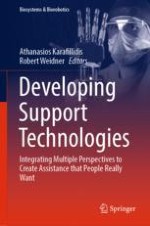2018 | OriginalPaper | Buchkapitel
Human Motion Capturing and Activity Recognition Using Wearable Sensor Networks
verfasst von : Gabriele Bleser, Bertram Taetz, Paul Lukowicz
Erschienen in: Developing Support Technologies
Aktivieren Sie unsere intelligente Suche, um passende Fachinhalte oder Patente zu finden.
Wählen Sie Textabschnitte aus um mit Künstlicher Intelligenz passenden Patente zu finden. powered by
Markieren Sie Textabschnitte, um KI-gestützt weitere passende Inhalte zu finden. powered by
